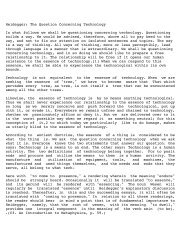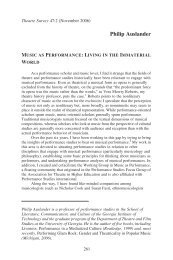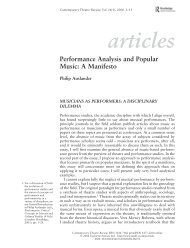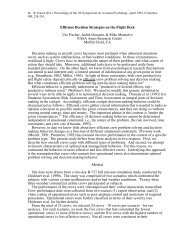INTERACTION DESIGN PRINCIPLES FOR INTERACTIVE ...
INTERACTION DESIGN PRINCIPLES FOR INTERACTIVE ...
INTERACTION DESIGN PRINCIPLES FOR INTERACTIVE ...
You also want an ePaper? Increase the reach of your titles
YUMPU automatically turns print PDFs into web optimized ePapers that Google loves.
CHAPTER 2<br />
BROAD CATEGORIES OF ITV PROGRAMMING – BY PLAT<strong>FOR</strong>M<br />
2.1 INTRODUCTION<br />
There are many ways to approach the categorization of iTV programming. I have<br />
chosen to do so by two methods: by platform, and by television genres and programming.<br />
It seems worthwhile to sort iTV programming in the United States by platforms because<br />
so many exist. In fact, the lack of platform standardization is one of the main challenges<br />
facing iTV today. The industry has attempted to introduce interactivity into every kind of<br />
platform with both success and failure. But are all platforms conducive to interactivity?<br />
How do different platforms afford different types of interactivity? It seems useful, in<br />
beginning with a platform-based approach, to identify the affordances and constraints of<br />
each platform.<br />
The affordances of a system can be both real and perceived. Real affordances<br />
entail all actions that are possible to perform on a system. Perceived affordances are what<br />
actions the user perceives to be possible. According to Donald Norman, in graphical,<br />
screen-based interfaces, the designer primarily can only control perceived affordances.<br />
That is, while a user can click anytime he/she wants to, the real question is: Does the user<br />
perceive that clicking on that location is a meaningful, useful action to perform? (1999).<br />
Constraints, on the other hand, fall into three categories: physical, logical, and cultural.<br />
Physical constraints are closely tied to real affordances (e.g., it is impossible to move the<br />
cursor outside the screen). Logical constraints, which use reasoning to determine the<br />
alternatives, are valuable in guiding behavior. Finally, cultural constraints are<br />
conventions shared by a cultural group (Norman, 1999). According to Norman, “A<br />
26














